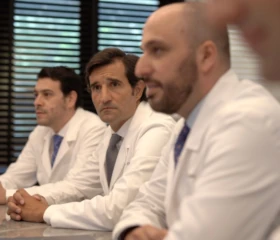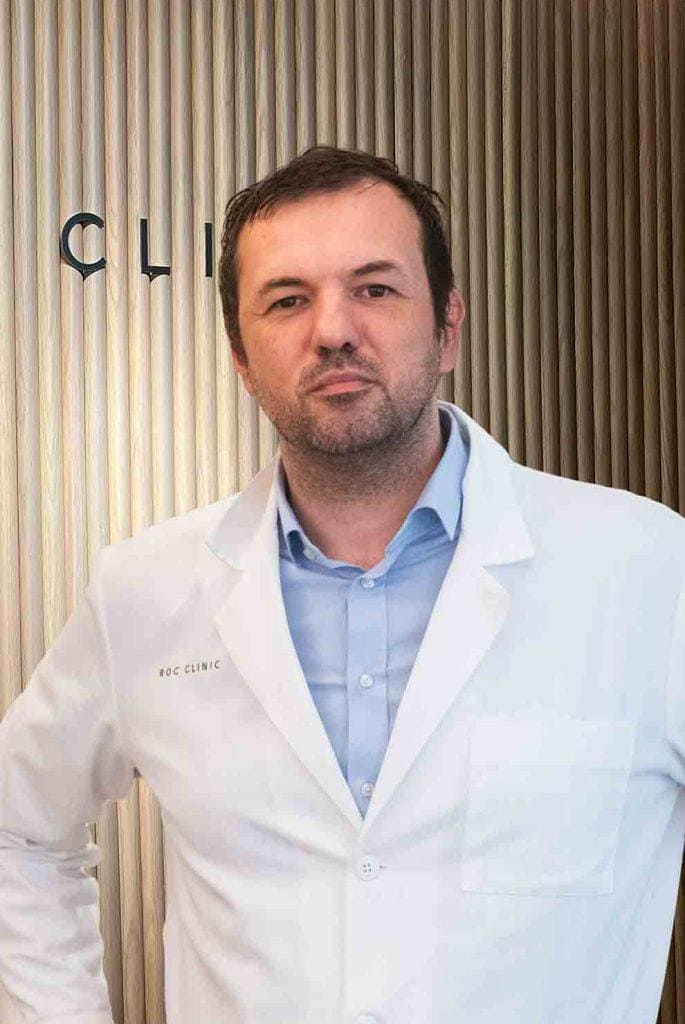Treatment Testosterone Deficiency
Administration of testosterone in the form of gel or injectables with the objective of returning the levels of this hormone to normal.
- Super-specialized urologists
- Personalized treatment
- Minimally invasive approach
- More than 16,000 patients successfully treated
Treatment
Testosterone deficiency can be treated by testosterone replacement therapy, which consists of administering testosterone through gel or injectable to bring testosterone levels back to normal.
Since testosterone acts at multiple levels in the body, periodic monitoring by an andrologist is necessary to avoid unwanted side effects. For this same reason, treatment is usually started with formulas that have a short half-life such as topical gel and, if no relevant alterations are observed, treatment is switched to medium-long life formulas such as testosterone injection, which provides very stable levels and favors adherence to treatment, since only four injections a year are necessary.
The patient is followed up at 3, 6 and 12 months from the beginning of the treatment. At each visit, the clinical evolution (sexual desire, erection, mood, muscle mass, weight) is analyzed, together with a blood test to rule out the main complications (PSA determination, hemogram, biochemistry with liver profile, testosterone, SHBG). Also, both at the time of diagnosis and during follow-up, it is advisable to perform a bone mineral density test.
Medication can help counteract the symptoms, achieving:
- Increased sexual desire
- Increased energy
- Hair growth
- Increased muscle mass
- Increased bone density
- Increased cognitive capacity.
The cognitive level is where an improvement in symptoms is usually seen most quickly. Mood, vigor and sexual desire usually respond relatively quickly. Studies also show that chronic testosterone treatment improves muscle mass by increasing strength, decreases fat mass by limiting overweight and obesity and improves some parameters of bone mineral density.
For older men with low testosterone levels, the benefits of testosterone replacement are less clear. In middle-aged men, treatment may take a long time to begin to show positive signs: results may take 3-12 months to be seen, depending on the symptom(s) to be improved. It is advisable to maintain treatment for a minimum of 6-12 months before considering discontinuation.
Testosterone deficiency syndrome in adults is usually related to metabolic syndrome such as obesity, arterial hypertension, diabetes and hypercholesterolemia. Therefore, it is essential not only to treat this disease but also its causes with a healthy diet and physical exercise.
Several scientific studies show that testosterone supplementation associated with physical exercise and diet is a better strategy than the use of testosterone alone or the prescription of diet and physical exercise alone, so we recommend the combined strategy.
Possible side effects
Side effects are uncommon:
- Dermatitis (with gel preparations)
- Elevated hematocrit (volume of red blood cells in the blood)
- Increased transaminases
- In case of overdosage, anxiety and sleep disturbances.
Testosterone treatment has an impact on fertility by inducing cessation of sperm production through negative feedback on the hypothalamic-pituitary-gonadal axis. This cessation of spermatogenesis is usually transient, although not in all cases. It is therefore essential to determine the desire for offspring in men with low testosterone levels. If offspring are desired, there are alternatives such as the use of clomiphene or the application of testosterone treatment with subsequent restarting of the hypothalamic-pituitary axis with BCHG at the time of seeking fertilization.
A relationship between testosterone supplementation and a potential worsening of prostate problems or even the development of prostatic neoplasia has been commonly misinterpreted. Scientific evidence shows that testosterone replacement does not in any way worsen voiding dynamics, nor is it related to the "awakening" of a prostate tumor.
They ask us in the Consultation
How do I know if I have low testosterone?
It is very easy. With a blood test (fasting and in the morning) we can study the state of the hormonal axis that regulates testosterone and androgens.
What happens if I take testosterone without needing it?
It is not recommended. It will cause you to stop producing testosterone on your own and become dependent on the medication. If you need testosterone, it is a very safe and effective medication; but taking it without needing it is a mistake.
How is testosterone taken?
Currently, in Spain, the best alternative is a testosterone gel that is applied every morning on the skin and, after some time, we can proceed to injectable testosterone.
What are the risks of testosterone treatment, is it bad for the heart, and is it bad for the prostate?
Testosterone treatment in men with hypogonadism is very safe and has very few side effects. It has been shown not to increase the risk of heart disease or prostate cancer.
Team of the Testosterone Deficiency Unit
Newsof ROC Clinic on Testosterone Deficiency
Research
Da Vinci and Hugo RAS Platforms for robot-assisted partial nephrectomy: a preliminary prospective comparative analysis of the outcomes.


 +34 912 627 104
+34 912 627 104 Contact
Contact






